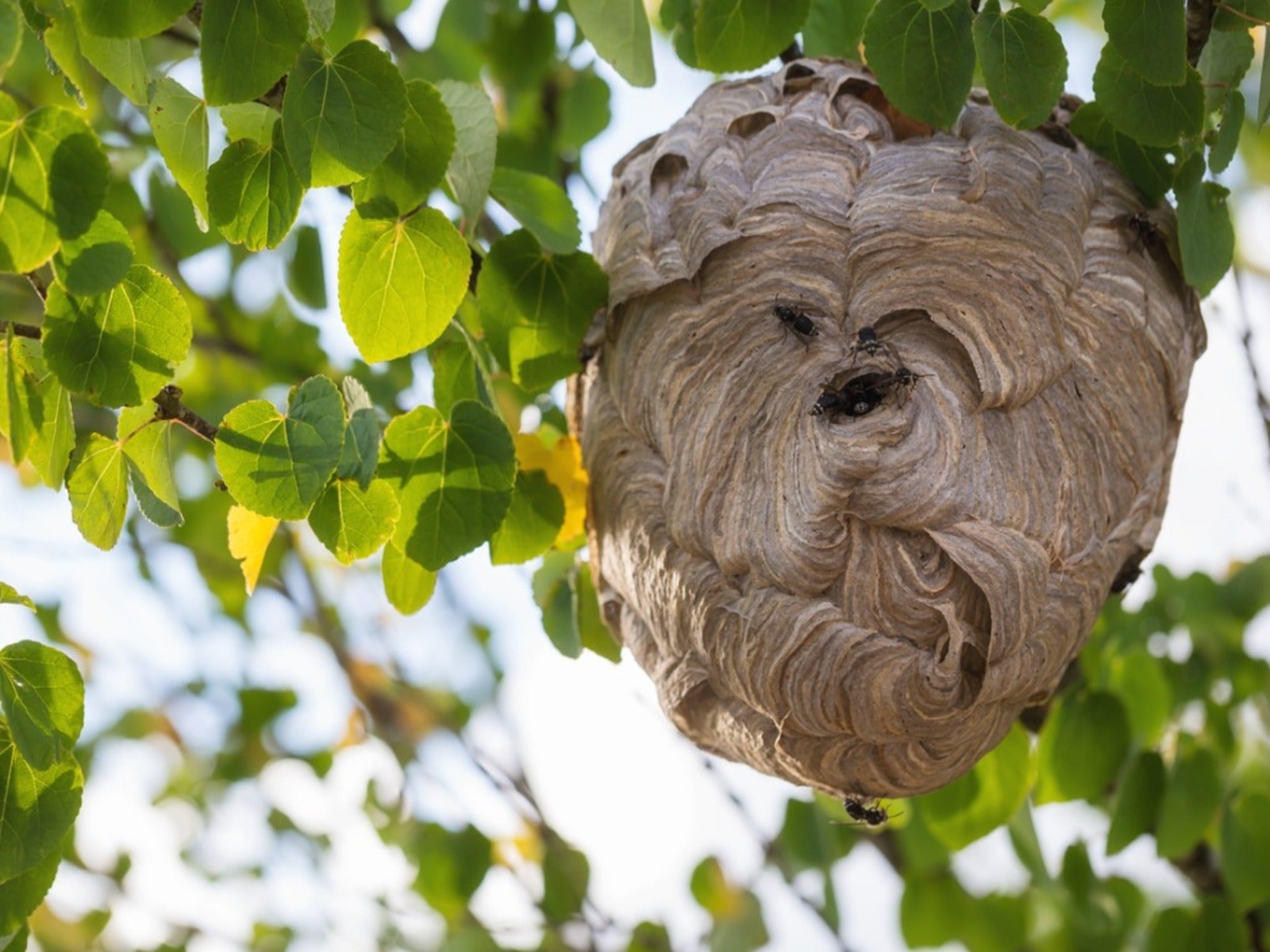
Bees are integral to life on the planet. So much so, in fact, that many gardeners take great pains to lure them into their landscape. But what about hornets and wasps? While they may have a less benign reputation, these insects are also valuable to plants.
How do you tell the difference between a bee nest vs. wasp nest vs. a hornet’s nest? Despite their similarities, bee or wasp nest identification is pretty simple once you know what you are looking for. Keep reading to find out the answers to “what does a wasp nest look like?” and “what does a hornet’s nest look like?”
Difference Between Bee, Wasp and Hornet Species
Size is the most obvious distinguishing feature between bees, wasps and hornets. Bees are smaller than the other two insects at around ½ inch (1.2 cm) in size or less. Next come wasps at about ¾ inch (2 cm) followed by the larger hornet which may be up to an inch (2.5 cm) or more.
Wasps and hornets have slimmer bodies than the rounded bodies of bees. Bees are also covered in yellowish fur vs. the hairless bodies of wasps and hornets.
Most people know that bees are generally not easily riled and, if they do sting it is because they were provoked. Bees also die after they have stung. Wasps and hornets are often portrayed as more aggressive than bees but they, too, rarely sting unless defending a nesting site. All three generally cause nominal pain when they sting, except in the case of those with an allergy, for whom a sting can be deadly.
The Difference between Hornets and Wasps
While bees, hornets and wasps are all members of the Hymenoptera family they have distinct differences, some of which we covered above.
One of the biggest differences between bees and hornets and wasps is that bees are vegetarians, subsisting on pollen. Wasps and hornets, although attracted to sweet substances, are also carnivores that feed on other insects.
Sign up for the Gardening Know How newsletter today and receive a free copy of our e-book "How to Grow Delicious Tomatoes".
As to the difference between hornets and wasps, all hornets are wasps but not all wasps are hornets. For instance the bald-faced hornet and the recently discovered Asian giant hornet also known as “murder hornets” are both actually wasps.
Hornets are also social insects while wasps tend to be solitary.
What does a Wasp Nest Look Like?
Wasps like to build nests in gutters, bushes, branches, eaves, and along fencing. Their nests look different according to species. Two of the most common wasps make paper wasp nests look like inverted umbrellas, while yellow jacket nests are more commonly found in the ground. Yellow jackets build paper combs underground filled with developing pupae that they will defend vigorously.
Ground Wasp Nest Identification
So wasp nests may be found in the ground or hanging. Hanging nests are usually made of mud and/or paper-like materials, while those below the soil will be under rocks, logs, patios, driveways or sidewalks.
How do you tell if a suspected nest is the work of an ant colony or a wasp? Ground wasp nests leave a telltale pile of dirt with a hole in the center. There will often be many of these nesting sites in the same area since, despite the fact that wasps are solitary, they do like to nest near each other.
What does a Hornet’s Nest Look Like?
Hornet nests can be found in a variety of areas depending upon the species. European hornet nests are formed in hollow trees and hidden away areas of barns, while other hornets like the bald-faced hornet hang their nests from trees, shrubs, utility poles and the eaves of your home. Their nests are oval in shape and can be up to 2 feet (61 cm) in length.
What Do Bees' Nests Look Like?
As far as identifying bees' nests, they vary depending upon the type of bee. The typical hexagon shaped nest filled with clusters of honeycombs is the home of the honeybee, while holes bored into wood siding are the work of carpenter bees.
Bumblebees, meanwhile, build mazes of coral-like nests either at ground level or below ground.
There are over 2,000 native bee, wasp, and hornet pollinators in the United States each playing an integral role. Some are indeed more aggressive or are simply situated in common areas of the yard and need to be either eradicated or moved. If possible it’s best to try to live with these insects but if they become dangerous consult a professional for removal.

Amy Grant has been gardening for 30 years and writing for 15. A professional chef and caterer, Amy's area of expertise is culinary gardening.
